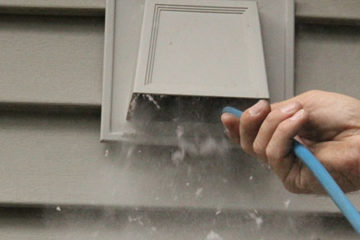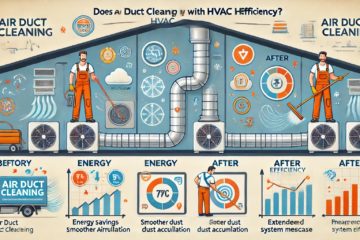In Alberta, achieving energy efficiency and maintaining indoor air quality have become top priorities for homeowners and builders. A blower door test plays a crucial role in ensuring that your building meets the airtightness and energy efficiency standards set by the Alberta Building Code (ABC). This guide will help you understand the importance of blower door testing for code compliance, what it involves, and how to navigate the process smoothly.
Understanding Blower Door Testing and Code Requirements
A blower door test measures how much air leaks through the gaps, cracks, and openings in a building’s envelope. This test helps determine how airtight a building is, directly affecting its energy efficiency, comfort, and indoor air quality. In Alberta, the Alberta Building Code (ABC) sets specific standards for airtightness, requiring buildings to meet certain energy performance levels. To comply, new and renovated buildings must demonstrate that they do not exceed the maximum allowable air changes per hour (ACH) at a pressure differential of 50 Pascals, commonly referred to as ACH50.
Key Standards for Blower Door Testing in Alberta
The Alberta Building Code specifies different airtightness requirements depending on the type and size of the building:
- Residential Buildings: For most new homes, the standard is typically set at 2.5 ACH50 or lower, although this may vary based on local requirements or the specifics of the building design.
- Commercial Buildings: These buildings often have stricter requirements due to their larger size and more complex systems. Meeting these standards often involves more detailed testing and analysis.
To ensure accurate results, the blower door test must follow established protocols like those from the Canadian Standards Association (CSA) or RESNET (Residential Energy Services Network). Adhering to these protocols guarantees the reliability of the test results and their acceptance by local building authorities.
Steps to Ensure Code Compliance with Blower Door Testing
To meet the code requirements, you must prepare properly for the blower door test:
- Preparation: Begin by sealing all intentional openings, such as windows, doors, and vents. Make sure that any dampers are closed, and all interior doors are open. This step is crucial to isolate unintended air leaks.
- Conducting the Test: Install the blower door in an exterior doorway, making sure it fits tightly. Once the setup is complete, turn on the fan to create a pressure difference between the inside and outside of the building. Use a smoke pencil or infrared camera to detect areas where air leaks.
- Reporting: After the test, document the findings, including the ACH50 value and any identified leakage points. Submit this report to the local building authority to verify compliance with the Alberta Building Code.
Common Challenges in Meeting Code Compliance
While conducting a blower door test, many buildings face common challenges:
- Leaky Windows and Doors: Gaps, cracks, or inadequate seals around windows and doors can significantly impact the airtightness of a building. Applying weatherstripping and caulking can help reduce leaks.
- Unsealed Ducts: Ductwork often accounts for a large portion of air leakage in both residential and commercial buildings. Ensure that all ducts are properly sealed and insulated.
- Poor Insulation: Inadequate or deteriorated insulation in attics, basements, and walls allows air to escape. Upgrading insulation is essential to meet compliance standards.
Addressing these issues before the test will save time, money, and the hassle of needing a retest.
Benefits of Meeting Code Compliance through Blower Door Testing
Achieving compliance with the Alberta Building Code through blower door testing provides several benefits:
- Financial Benefits: You will save on heating and cooling costs by reducing air leakage. Many regions also offer rebates or incentives for improving energy efficiency.
- Comfort and Health Benefits: Sealing air leaks leads to fewer drafts and better temperature control, improving comfort. A tighter building envelope also keeps out pollutants, allergens, and moisture, enhancing indoor air quality.
- Environmental Impact: Lower energy use means a smaller carbon footprint, helping to meet both provincial and national sustainability goals.
Tips for Choosing a Qualified Professional for Blower Door Testing
Hiring a qualified professional to conduct your blower door test is crucial for achieving accurate results and ensuring compliance. Here’s what to consider:
- Qualifications and Certifications: Look for a professional certified by recognized bodies, such as NRCan (Natural Resources Canada) or a local energy advisor network.
- Experience: Ask about their experience in conducting blower door tests, especially in Alberta’s climate conditions.
- Adherence to Standards: Ensure the professional follows established testing protocols and provides a detailed report that meets local code requirements.
What to Expect After a Blower Door Test
After completing the blower door test, you will receive a report with your building’s ACH50 value. This number indicates how many times the air inside the building is replaced per hour due to leaks. A lower ACH50 means a more airtight building. If the building does not meet the required standards, you should take steps to seal leaks, upgrade insulation, or address other issues before considering a retest. Meeting code compliance often enhances overall energy efficiency, reducing utility bills and improving comfort.
Conclusion
In Alberta, code compliance through blower door testing is a smart investment for anyone building, renovating, or upgrading their property. This testing ensures that your home or building meets all airtightness and energy efficiency standards, resulting in lower energy costs, a healthier indoor environment, and a reduced environmental footprint. Don’t wait—contact a qualified professional today to schedule your blower door test and start enjoying the benefits of a more efficient, comfortable, and compliant home.




